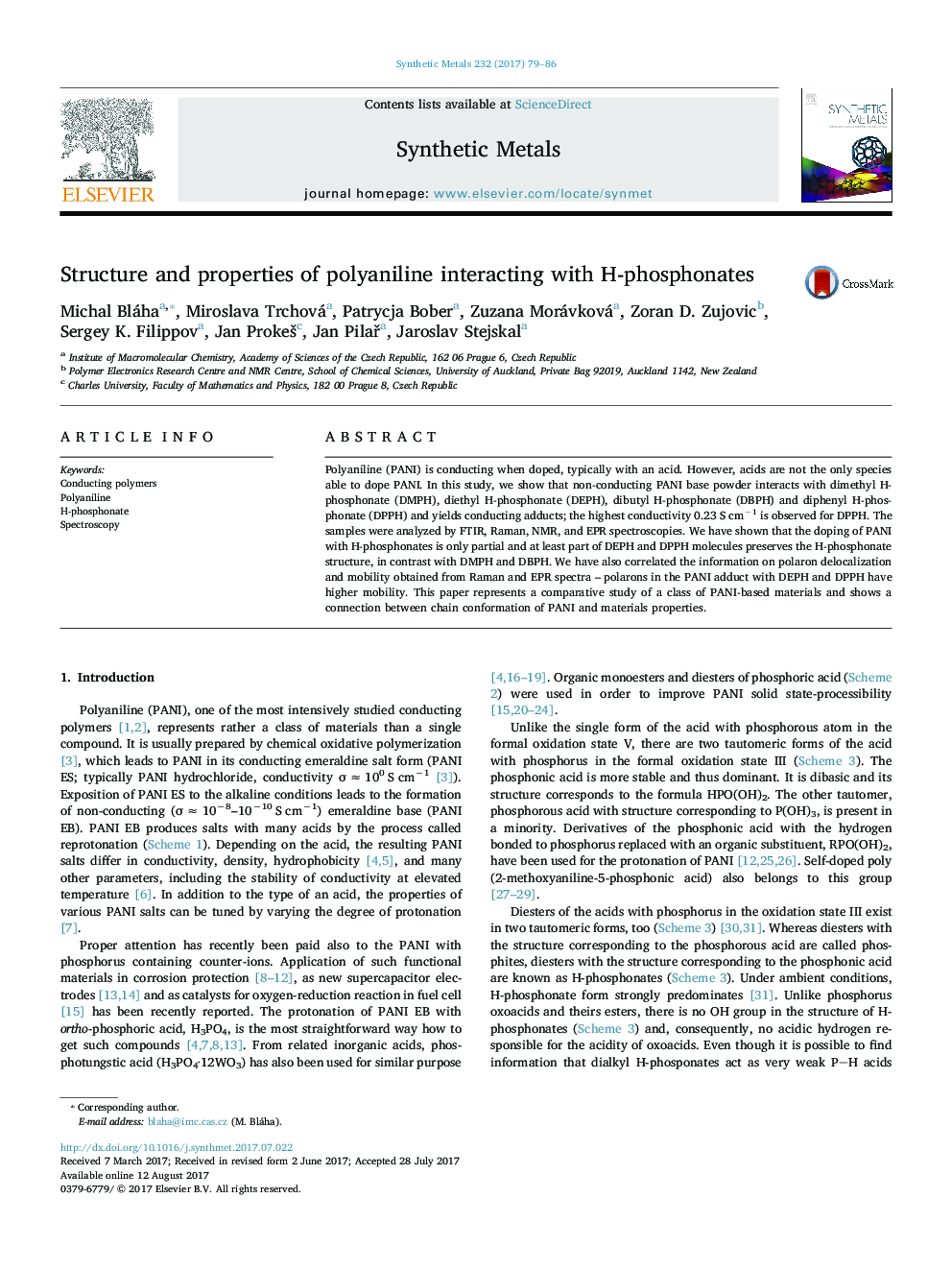| Article ID | Journal | Published Year | Pages | File Type |
|---|---|---|---|---|
| 5435337 | Synthetic Metals | 2017 | 8 Pages |
â¢Polyaniline base interacts with H-phosphonates and forms conductive products.â¢Conductivity qualitatively correlates with acidity of H-phosphonates.â¢Raman and EPR spectroscopies provide consistent information on polaron delocalization/charge carriers.
Polyaniline (PANI) is conducting when doped, typically with an acid. However, acids are not the only species able to dope PANI. In this study, we show that non-conducting PANI base powder interacts with dimethyl H-phosphonate (DMPH), diethyl H-phosphonate (DEPH), dibutyl H-phosphonate (DBPH) and diphenyl H-phosphonate (DPPH) and yields conducting adducts; the highest conductivity 0.23Â SÂ cmâ1 is observed for DPPH. The samples were analyzed by FTIR, Raman, NMR, and EPR spectroscopies. We have shown that the doping of PANI with H-phosphonates is only partial and at least part of DEPH and DPPH molecules preserves the H-phosphonate structure, in contrast with DMPH and DBPH. We have also correlated the information on polaron delocalization and mobility obtained from Raman and EPR spectra - polarons in the PANI adduct with DEPH and DPPH have higher mobility. This paper represents a comparative study of a class of PANI-based materials and shows a connection between chain conformation of PANI and materials properties.
Graphical abstractDownload high-res image (63KB)Download full-size image
